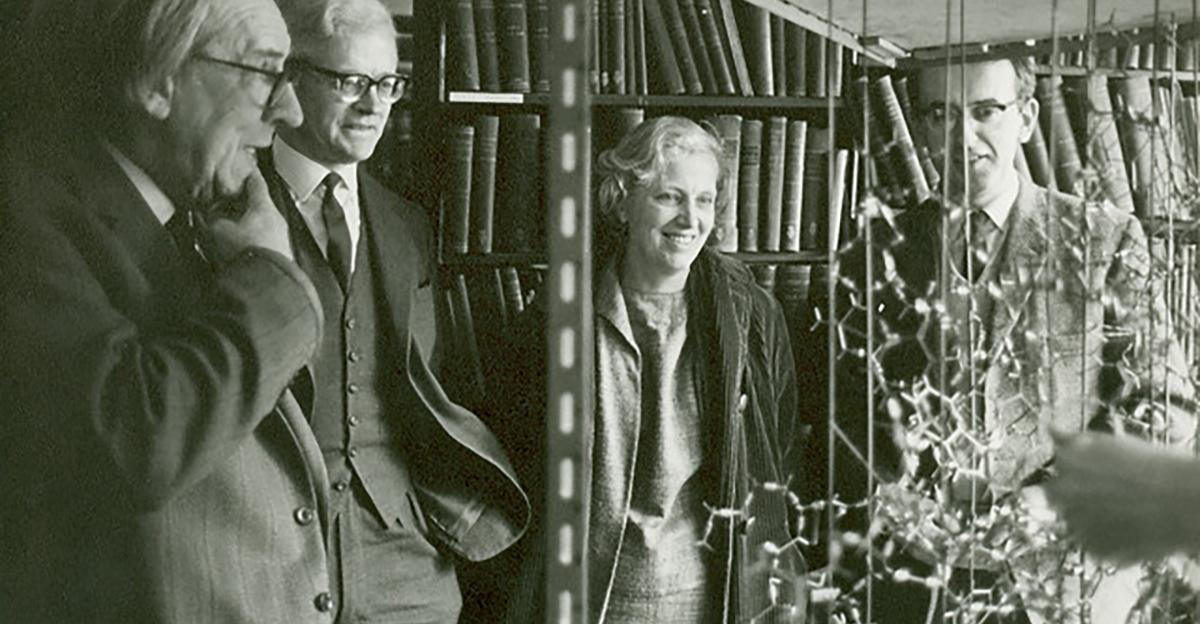Throughout history, thousands of impactful innovators have been in STEM fields. However, the underrepresentation of women has perpetuated a lack of equity in these fields. This makes it all the more important that educators take the time to highlight key female role models. Dr. Dorothy Hodgkin was a British biochemist who won the Nobel Prize for developing protein crystallography in 1964.
I should not like to leave an impression that all structural problems can be settled by x-ray analysis or that or that all crystal structures are easy to solve. I seem to have spent much more of my life not solving structures than solving them.
Dr. Dorothy Hodgkin
Who Was Dorothy Hodgkin?
Dorothy Hodgkin was born Dorothy Mary Crowfoot in 1910. She and her siblings were raised in Egypt and England, and her primary education was in England, where she developed a passion for chemistry. Her mother, a highly proficient botanist, encouraged her interest in all the sciences.
After graduating high school, Dorothy began studying chemistry at Somerville College, Oxford. In 1932, she became only the third woman in history to be awarded a first-class honors degree. After receiving her degree, Hodgkins began using X-ray crystallography to research the structure of proteins. Because of this research, she was awarded her PhD in 1937.
Of all her research and discoveries, Dorothy Hodgkin is most well-known for discovering three-dimensional bio-molecular structures.
5 Facts About Dorothy Hodgkin
Share these 5 fun and interesting facts about Dorothy Hodgkin with your students.
- Dorothy was born in Cairo, Egypt, but spent most of her life with her grandparents in England while her parents worked abroad in Egypt.
- Hodgkin was awarded the Nobel Prize in 1964 for Chemistry after discovering the structure of many molecules, including vitamin B12, penicillin, and insulin.
- Dorothy also received the Order of Merit in 1965—she was only the second woman in history to receive the distinction.
- Hodgkin developed chronic rheumatoid arthritis at the young age of 28, leaving her hands swollen and painful. Despite this, she continued to pursue her passion and work.
- From 1975 to 1988, Dorothy was president of the Pugwash Conferences on Science and World Affairs, an organization that sought to bring together scientists from around the world.
Quick Group Discussion Questions
After sharing this information about Dorothy Hodgkin and her career and achievements, have students break into groups and answer the following questions before sharing their thoughts with the class.
- Dorothy Hodgkin struggled with painful arthritis throughout her life but persevered and continued to make important discoveries. How can we be better supports for other people when they are struggling?
- Three-dimensional models of molecules have inspired many creative works of art. Can you think of other scientific structures or discoveries that have inspired artists throughout history?
- Dorothy Hodgkin persevered despite facing sexist attitudes as one of the first women to be awarded a first-class honors degree (typically reserved for men). Share a time when you felt you had to persevere to accomplish something you were passionate about.
Women in STEM: Dr. Mae Jemison Facts & Discussion Questions
Women in STEM: Dr. Rosalind Franklin Facts & Discussion Questions






Leave a Reply